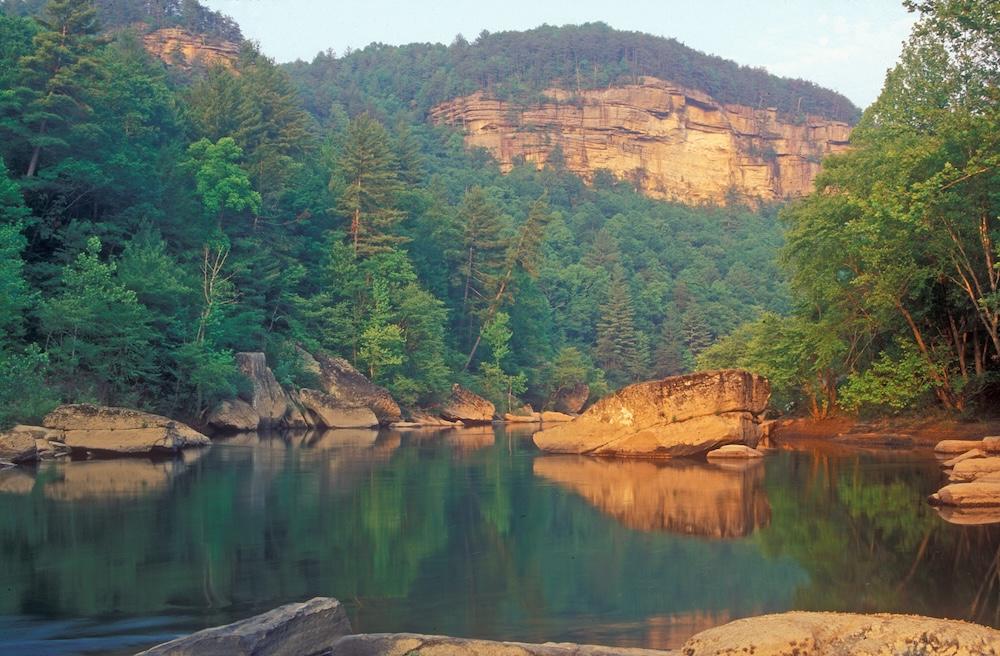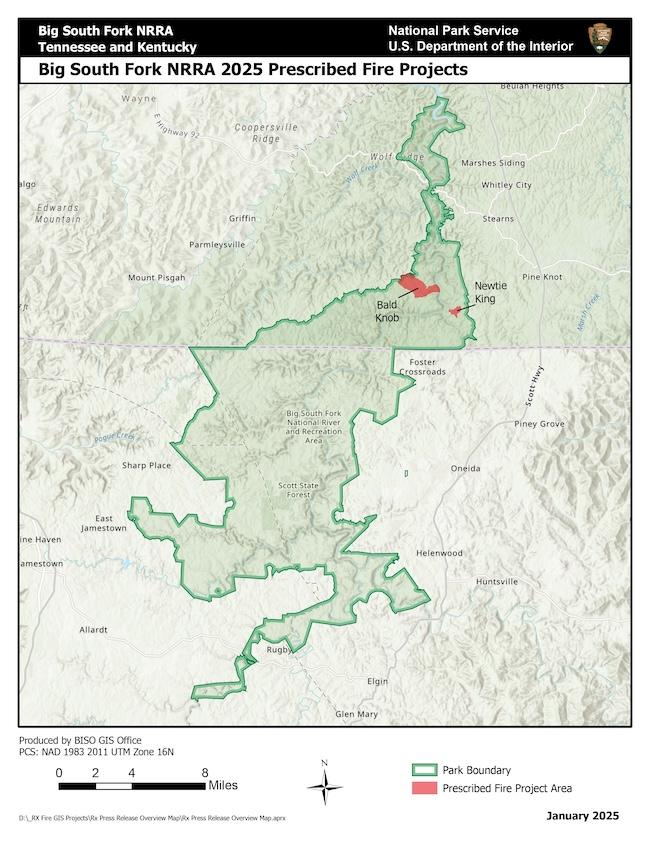
The Big South Fork River is framed against the sheer cliffs of the river gorge / NPS
In the spring of 2025, fire crews from Big South Fork National River and Recreation Area will carry out prescribed burns in the Bald Knob and Newtie King (Bear Creek) areas of the Kentucky District, as well as in various fields throughout Tennessee and Kentucky. These controlled burns, which follow the guidelines set in the park’s Fire Management Plan, will take place within park boundaries to help maintain ecosystem health.
Around 1,100 acres in the Bald Knob area, between Water’s Cemetery Road and the Ledbetter Multi-Use Trail, are scheduled to be burned. For safety, temporary closures of trails and park roads, including Water’s Cemetery Road, Ledbetter Multi-Use Trail, and portions of the Kentucky Trail between Oil Well Branch and Water’s Cemetery Road, will be necessary during the burn.
In the Bear Creek area, about 130 acres within the Newtie King burn unit along Bear Creek Road will also be burned. Temporary closures will affect sections of Bear Creek Road, Bear Creek Loop horse trail, Cotton Patch Loop horse trail, and Bear Creek Overlook trail to ensure visitor safety.

Map of the prescribed burn area / NPS
On burn days, smoke will be visible in the Bald Knob and Newtie King areas, but daytime smoke impacts are expected to be minimal with only slight visual effects on nearby roads. Field burns throughout the park will also have little impact on visitors, with short-term road and trail closures near affected areas and limited smoke concerns.
Fire crews are actively preparing these areas to ensure burns are conducted safely and efficiently. The goal is to begin as soon as conditions allow. Local communities should expect minor smoke and visibility impacts.
The timing of these burns depends on multiple factors, including temperature, humidity, fuel moisture, and wind speed. Fire has played a crucial role in shaping the landscape for thousands of years, recycling nutrients locked in vegetation, duff, and soil layers while promoting a healthier environment for plants and wildlife. During planning, special care is taken to protect historically, culturally, and ecologically significant areas.

 Support Essential Coverage of Essential Places
Support Essential Coverage of Essential Places






